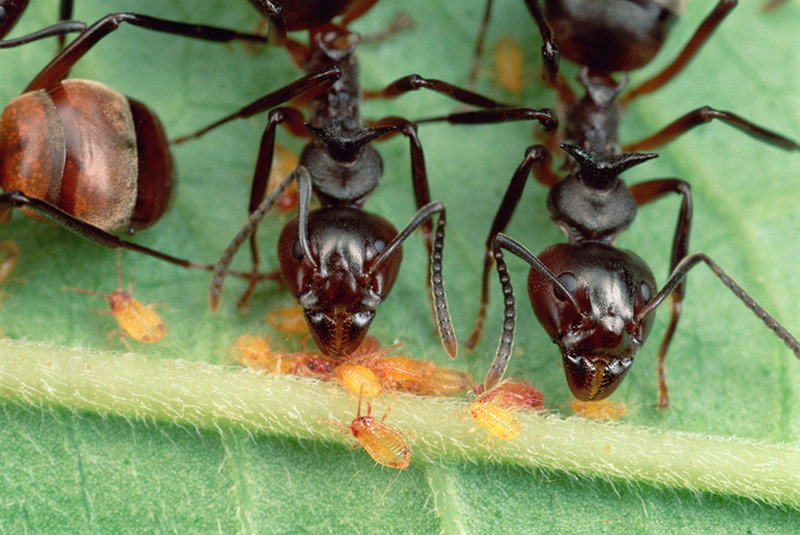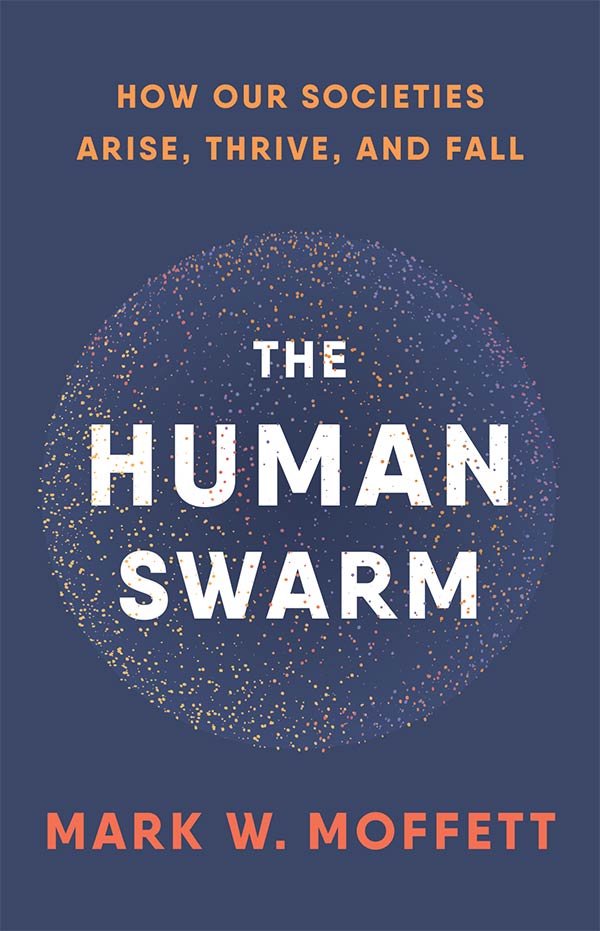Mark W. Moffett describes how comparing identical things is extremely boring; breakthroughs in science often come about by exploring points of similarity between things that are normally seen as very different—in his own research, and that of his mentor, Edward O. Wilson, ants and humans.
This article, adapted from The Human Swarm: How Societies Arise, Thrive and Fall, by Mark Moffett (Basic Books 2019), was originally published in Skeptic magazine 25.1 (2020).
Ants stake out territories, boldly gathering food even from our dinner plates, and rear their progeny in elaborate safe havens. Communicative, persistent, hardworking, battle ready, risk-taking, and highly organized, whether they are agronomists, herders, or hunter-gatherers, ants form elaborate labor forces of superb military operatives and diligent homemakers, masters at both protecting and providing for their colonies. Leafcutter ants, for one, have societies decidedly more complicated than any other nonhuman animal, and carry out mass-scale agriculture to boot.
Likening ants to people as I have just done can raise hackles—Edward O. Wilson, my mentor and the founder of sociobiology, has gotten into some trouble for it. The question is, can making comparisons go too far?
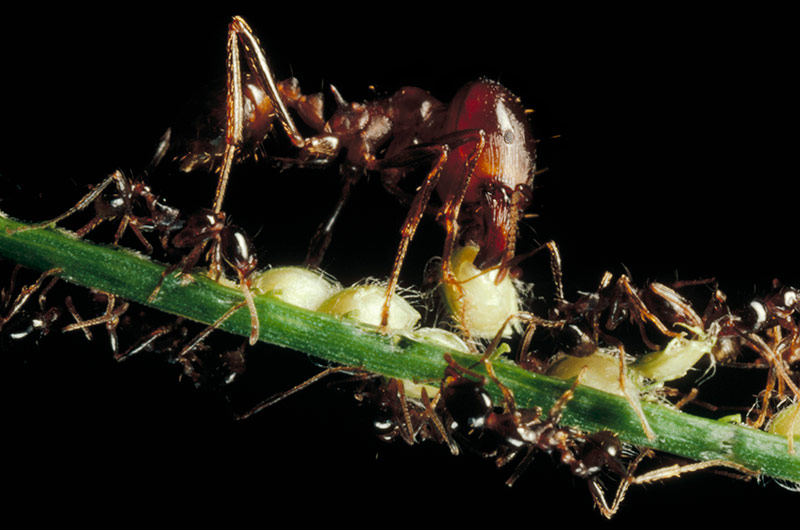
The marauder ants of southeast Asia form simple assembly lines to harvest food — in this case, seeds extracted from grass stalks. Larger ant workers (the so-called “medias”) have the strength to pull the yellowish-white seeds free from the stalk, as the one at the left has done; smaller workers grab the loosened seed and carry it off, leaving the larger individual to move onto the next seed. Teamwork and assembly lines in ants can be studied in detail and are often manifested in far more elaborate ways than in species such as our relative the chimpanzee. Copyright Mark W. Moffett. All rights reserved.
Comparing ourselves to other mammals comes easier, because we are mammals ourselves, as our hair, warm-bloodedness, and ability to lactate confirm. For all that, while watching a documentary on mammals, you likely won’t find yourself exclaiming Eureka, they are so like us! More often the differences strike us: quirks such as the fact that male elephants are outcasts— not members of any society at all, properly speaking. As for those relatives of ours—the chimpanzee and bonobo—how like them are we? Physically we resemble both apes, owing to a genetic closeness of the three species. But what of our social life? Most of the similarities that have been brought up bear more on broad facets of cognition than on the details of the apes’ social organization we would otherwise think of as specific to people.
Those similarities are seldom as great or exclusive as they might seem. Insomuch as chimps and bonobos think as we do, the parallels often extend to other animals, too. Both are like us in recognizing themselves in a mirror; then again so do dolphins, elephants, and magpies. A claim exists, widely doubted, that ants do, too. At one time chimps were thought to be unique among nonhumans in making tools—employing twigs to snare termites is one example. Yet we know now of other toolmakers, such as woodpecker finches which poke twigs to nab bugs. They can be socially manipulative; but then again so can just about any other social vertebrate, and especially other big-brained species such as the grey wolf and spotted hyena.
The fact is that though we share 98.7 percent of our genes with chimpanzees and bonobos, it’s our differences that are most striking. Indeed, we are as different from them as apples are from oranges. In both apes, relationships are dictated by strict hierarchies of power, which are tyrannical in the chimp—especially in the males. On maturing, females of both species abandon childhood kith and kin for another community, never to return. The females are sexually receptive only on occasion, a condition made obvious by their swollen rear ends. The female chimp can pretty much either be beaten up or ignored by males except on the rare days she’s in heat, at which point she often has sex forced on her. No wonder neither chimps nor bonobos have pair bonds or an extended family life, and mothers get little child support from dad—or anyone. Females aren’t especially skilled at befriending each other, either; in fact a harried mother chimp must give birth at a private site to avoid having her baby killed.
So the social lives of other mammals can seem downright weird, if not altogether inhuman. And next to their weirdness is ours as mammals: No chimp has to grapple with the rules of a speedway or the upkeep of a homestead. Nor does it contend with traffic congestion, public health issues, assembly lines, complex teamwork, labor allocation, market economies, resource management, mass warfare, or slavery. As alien as insects seem to us in appearance and intelligence, only certain ant and human societies do such things, along with a few other social insects such as honeybees and some termites.
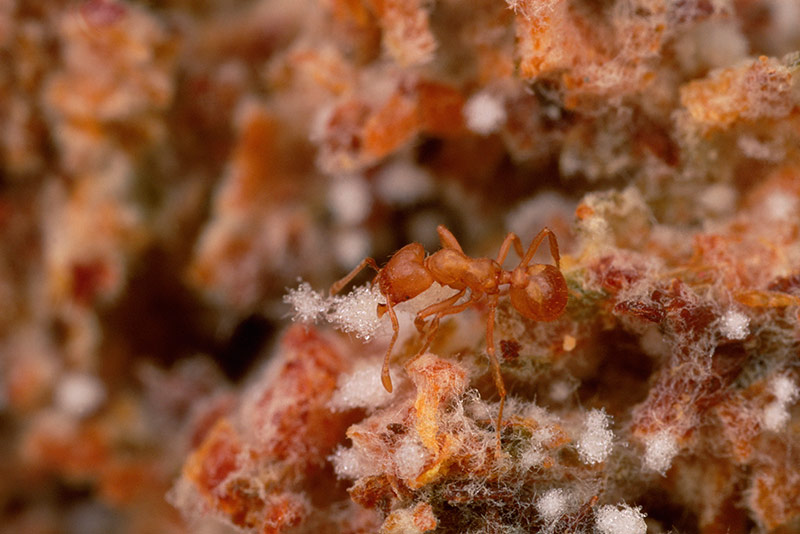
Among the ants, the most elaborate assembly lines occur in the Atta leafcutter species of tropical America, which rear a fully domesticated fungus that has evolved specialized structures resembling tiny apples containing the ant’s complete dietary requirements. Different leafcutter ant specialists in the colony cut the foliage, carry the plant material to the nest, grind it into a mulch, apply the mulch to their fungus gardens, and finally plant fresh clumps of the clear white fungus into the mulch (which is what the ant is doing in this photograph). Other ant workers tear out any foreign, inedible fungi “weeds” and apply a pesticide (more specifically, a fungicide) to the gardens to stop these undesirable species from invading. Copyright Mark W. Moffett. All rights reserved.
If you find comparisons of ants to people troubling, I confess to a glitch in my brain. The idiom compare apples to oranges confuses me. When I hear it I have to stop to think whether it’s intended to signify that apples and oranges shouldn’t be compared since they are so distinct; any botanist, for instance, will tell you one is in the rose family and the other is a citrus. Or does it mean they should be compared because they are so alike? Both are plant matter; both contain seeds, are round, reach a similar size, grow on trees, are fruit—the list goes on and on, so much so that in some languages the word for “orange” labels this fruit as a sort of apple.
But (I imagine someone protesting) no human hunters have ever caught prey in the way ants do, swarming and biting; and no human residence resembles one of their nests. So when are we justified in comparing an apple to an orange, or an ant to a human? American philosopher Nelson Goodman described the notion of similarity as “a pretender, an imposter, a quack.” I’m sure he would have had equally bad things to say about differences. Any two things, apples and oranges among them, have innumerable characteristics in common and an equally immeasurable number of dissimilarities. What interests someone, similarities or differences, depends on that person’s point of view. Identical twins aren’t identical in the eyes of their mother; and the members of one race, though some outsiders may fail to differentiate among them, don’t look alike to each other. If nothing else, remember this: comparing identical things is boring. For a scientist making comparisons bears most fruit when parallels are noticed between ideas or things or actions ordinarily treated as distinct, which makes ants, alien as they may be, prime candidates for our scrutiny.
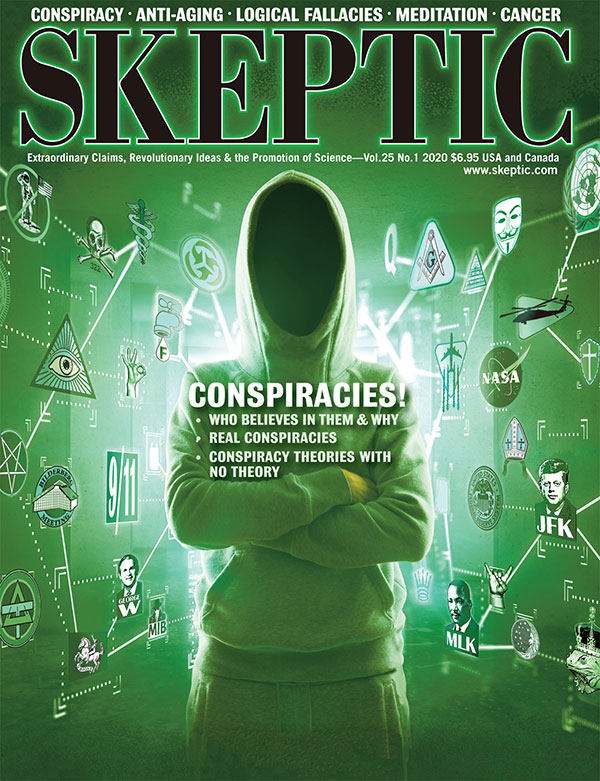
This article appeared in Skeptic magazine 25.1
Buy print edition
Buy digital edition
Subscribe to print edition
Subscribe to digital edition
People and ants reach different solutions to the same general problems, sometimes by using completely different approaches; but then again so can different human societies or different ant societies. Hence slavery in ants, where individuals work against their interests immersed in another society, is different from how Americans carried out slavery, which in turn differed from the treatment of those defeated in war by ancient Greeks. In some parts of the world, we drive on the left side of the road, in others on the right. On busy routes of Asia’s marauder ants, incoming traffic streams down the highway center while outbound ants take its flanks, a three-lane approach no human city has tried. Both patterns bespeak the importance of getting goods and services to the right places safely and efficiently when the populace depending on them is enormous. The biblical King Solomon, a shrewd observer of nature, was right to admonish the reader to go to the ant, thou sluggard, consider her ways and be wise—though their flair for violence indicates that while we can indeed learn much from considering the ant, it’s not always advisable to emulate them! ![]()
Suggested citation: Moffett, M. (2020). Apples and Oranges, Ants and Humans: The Misunderstood Art of Making Comparisons. Skeptic, 25(1), 8–9.
Coda: As an example of the utility of looking at ants and humans, I was recently invited to write a review to compare and contrast ant colonies and human organizations, which was published in a leading business journal alongside fruitful commentaries by several academic business leaders (Moffett et al. 2021. “Ant colonies: Building complex organizations with minimal brains and no leaders.” Journal of Organization Design 10:55—74).
About the Author
Dr. Mark W. Moffett, over six years as an entomologist at the Smithsonian Institution and visiting scholar in the Department of Human Evolutionary Biology at Harvard, built a synthesis of how societies stay together and what causes them to fall apart, across species and in humans right up to the present day. The resulting book, The Human Swarm: How Our Societies Arise, Thrive and Fall, merges biology with modern psychology and anthropology with surprising insights. Moffett is a fellow of the Skeptics Society, and his ongoing research on the stability of societies is funded by the John Templeton Foundation. See his website, doctorbugs.com.
This article was published on April 7, 2022.







